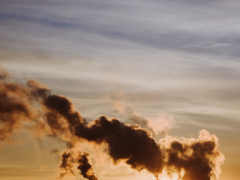Governments and non-state actors need to take urgent action to meet Paris Agreement goals
Governments and non-state actors need to deliver an urgent increase in ambition to ensure the Paris Agreement goals can still be met, according to a new UN assessment. Researchers of PBL Netherlands Environmental Assessment Agency were among the leading authors of this study.
The eighth edition of UN Environment’s Emissions Gap report, released ahead of the UN Climate Change Conference in Bonn, finds that national pledges only bring a third of the reduction in emissions required by 2030 to meet climate targets, with private sector and sub-national action not increasing at a rate that would help close this worrying gap.
The Paris Agreement looks to limit global warming to under 2oC, with a more ambitious goal of 1.5oC also on the table. Meeting these targets would reduce the likelihood of severe climate impacts that could damage human health, livelihoods and economies across the globe.
World still heading for temperature rise of 2.9 to 3.4oC this century, even with Paris pledges
As things stand, even full implementation of current unconditional and conditional Nationally Determined Contributions makes a temperature increase of at least 3 oC by 2100 very likely – meaning that governments need to deliver much stronger pledges when they are revised in 2020. Should the United States follow through with its stated intention to leave the Paris Agreement in 2020, the picture could become even bleaker.
The report does, however, lay out practical ways to reduce emissions through rapidly expanding mitigation action based on existing options in the agriculture, buildings, energy, forestry, industry and transport sectors. Strong action on other climate forcers – such as hydrofluorocarbons, through the Kigali Amendment to the Montreal Protocol, and other short-lived climate pollutants such as black carbon – could also make a real contribution.
Greenhouse gas emission levels continued to rise in 2016
CO2 emissions have remained stable since 2014, driven in part by renewable energy, notably in China and India. This has raised hopes that emissions have peaked, as they must by 2020 to remain on a successful climate trajectory. However, the report warns that other greenhouse gases, such as methane, are still rising, and a global economic growth spurt could easily put CO2 emissions back on an upward trajectory.
The report finds that current Paris pledges make 2030 emissions likely to reach 11 to 13.5 gigatonnes of carbon dioxide equivalent (GtCO2e) above the level needed to stay on the least-cost path to meeting the 2oC target. One gigatonne is roughly equivalent to one year of transport emissions in the European Union (including aviation). The emissions gap in the case of the 1.5oC target is 16 to 19 GtCO2e, higher than previous estimates as new studies have become available.
Investing in technology key to success
To avoid overshooting the Paris goals, governments (including by updating their Paris pledges), the private sector, cities and others need to urgently pursue actions that will bring deeper and more-rapid cuts. The report lays out ways to do so, particularly in agriculture, buildings, energy, forestry, industry and transport. Technology investments in these sectors – at an investment cost of under $100 per tonne of CO2 avoided, often much lower – could save up to 36 GtCO2e per year by 2030.
Much of the potential across the sectors comes from investment in a few areas: solar and wind energy, efficient appliances, efficient passenger cars, afforestation and stopping deforestation. Focusing only on recommended actions in these areas – which have modest or net-negative costs – could cut up to 22 GtCO2e in 2030. These savings alone would put the world well on track to hitting the 2oC target, and unlock the possibility of reaching the aspirational 1.5oC target.
Non-state action and other initiatives
Actions pledged by non-state and sub-national bodies (such as cities and the private sector) could reduce the 2030 emissions gap by a few GtCO2e, even accounting for overlap with Nationally Determined Contributions. The world’s 100 largest emitting publicly traded companies, for example, account for around a quarter of global greenhouse emissions, demonstrating huge room for increased ambition.
The Kigali Amendment to the Montreal Protocol aims to phase out the use and production of hydrofluorocarbons – chemicals primarily used in air conditioning, refrigeration and foam insulation. If successfully implemented, it kicks-in too late to impact the 2030 gap, but can make a real contribution to reaching the longer-term temperature goals.
By mid-century, reductions in short-lived climate pollutants, such as black carbon and methane, could help reduce impacts that are based on cumulative heat uptake and help to ensure a steady and lower temperature trajectory towards the long-term Paris goals.
Also, while the G20 is collectively on track to meet its Cancun climate pledges for 2020, these pledges do not create a sufficiently ambitious starting point to meet the Paris goals. Although 2020 is soon, G20 nations can still carry out actions that lead to short-term reductions and open the way for more changes over the following decade.




